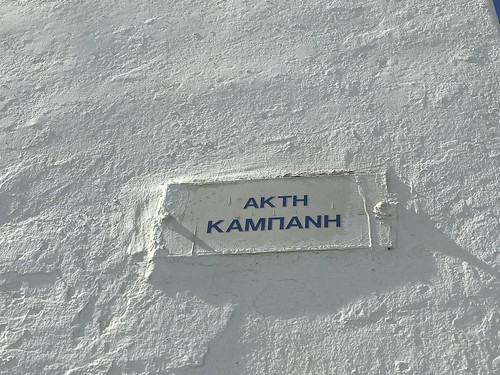Usceptibility of all isolates of S. pneumoniae with IPD that were sent towards the German tiol Reference Center for Streptococci (NRCS) among and and to evaluate possible trends in nonsusceptibility over time. Im l et al; licensee BioMed Central Ltd. That is an Open Access post distributed under the terms with the Creative Commons Attribution License (http:creativecommons.orglicensesby.), which permits unrestricted use, distribution, and reproduction in any medium, supplied the origil operate is effectively cited.Im l et al. BMC Microbiology, : biomedcentral.comPage ofThe description of serotype certain resistance, was a significant aim with the study. The study was undertaken against the background in the current observation of declining macrolide resistance rates especially amongst German young children.MethodsStudy designThe NRCS has conducted surveillance for invasive pneumococcal illness in Germany considering the fact that. A populationd laboratorybased method was used to collect information on invasive pneumococcal disease amongst kids years and adults years in Germany. Isolates have been sent towards the NRCS by diagnostic microbiological laboratories all through Germany on a voluntary basis. Circumstances from January, to December, have been incorporated within this study. A case of IPD was defined by the isolation of S. pneumoniae from a normally sterile web site.Microbiological investigationsIsolates have been identified by typical procedures like bile solubility and optochin sensitivity. Minimal inhibitory concentrations (MIC) testing was performed using the broth microdilution strategy as advised by the Clinical and Laboratory Requirements Institute (CLSI). Macrolide resistance was investigated using MedChemExpress JNJ-42165279 erythromycin or clarithromycin, in which testing with erythromycin was replaced by clarithromycin more than the years. isolates have been tested both for erythromycin and  clarithromycin. The susceptible, intermediate, and resistant breakpoints (MIC) were and g ml, both for erythromycin and clarithromycin. Streptococcus pneumoniae ATCC was applied as a manage strain.Statistical alysisAll categorical information had been expressed as frequencies. To alyse a extreme boost or reduce more than time the CochranArmitage test was made use of. The general significance level was adjusted making use of the Bonferroni correction to account for the issue of
clarithromycin. The susceptible, intermediate, and resistant breakpoints (MIC) were and g ml, both for erythromycin and clarithromycin. Streptococcus pneumoniae ATCC was applied as a manage strain.Statistical alysisAll categorical information had been expressed as frequencies. To alyse a extreme boost or reduce more than time the CochranArmitage test was made use of. The general significance level was adjusted making use of the Bonferroni correction to account for the issue of  a number of testing. On account of tests pvalues. had been thought of as statistically considerable test results. All statistical HOE 239 site alyses were carried out employing SAS Version (SAS Institute Inc Cary, NC, USA).Benefits In total,, isolates from invasive pneumococcal illness had been collected involving January, and December The number of circumstances for each and every year vary among and, (median: situations). Data on macrolide susceptibility had been out there for, isolates, whereas, isolates origited from adults,, isolates were from young children.The general nonsusceptibility price of all isolates was. (intermediate; resistant ). Larger resistance prices had been observed amongst young children (intermediate; resistant ) than amongst adults (intermediate; resistant. ) (Table ). The sampling source connected nonsusceptibility is shown in Table. Highest nonsusceptibility rates were observed for pharyngeal isolates (, n ), pericardium (, n ) and mastoid (, n ). Nonsusceptibility rates for CSF and blood had been. and. , respectively. The serotype distribution broken down for the sampling supply is shown in Table. For blood, CSF and BAL serotype is most prevalent, whereas for pleural fluid serotypes and are PubMed ID:http://jpet.aspetjournals.org/content/124/4/290 most frequently found. As for the childhood IPD isolates within the initially year of.Usceptibility of all isolates of S. pneumoniae with IPD that have been sent for the German tiol Reference Center for Streptococci (NRCS) amongst and and to evaluate possible trends in nonsusceptibility over time. Im l et al; licensee BioMed Central Ltd. This is an Open Access report distributed under the terms from the Inventive Commons Attribution License (http:creativecommons.orglicensesby.), which permits unrestricted use, distribution, and reproduction in any medium, provided the origil perform is correctly cited.Im l et al. BMC Microbiology, : biomedcentral.comPage ofThe description of serotype particular resistance, was a significant aim on the study. The study was undertaken against the background on the recent observation of declining macrolide resistance prices specially among German youngsters.MethodsStudy designThe NRCS has conducted surveillance for invasive pneumococcal disease in Germany since. A populationd laboratorybased method was employed to gather data on invasive pneumococcal disease among youngsters years and adults years in Germany. Isolates had been sent to the NRCS by diagnostic microbiological laboratories throughout Germany on a voluntary basis. Circumstances from January, to December, were integrated in this study. A case of IPD was defined by the isolation of S. pneumoniae from a normally sterile web-site.Microbiological investigationsIsolates have been identified by typical procedures like bile solubility and optochin sensitivity. Minimal inhibitory concentrations (MIC) testing was performed applying the broth microdilution system as advised by the Clinical and Laboratory Requirements Institute (CLSI). Macrolide resistance was investigated utilizing erythromycin or clarithromycin, in which testing with erythromycin was replaced by clarithromycin more than the years. isolates had been tested each for erythromycin and clarithromycin. The susceptible, intermediate, and resistant breakpoints (MIC) have been and g ml, each for erythromycin and clarithromycin. Streptococcus pneumoniae ATCC was applied as a control strain.Statistical alysisAll categorical information had been expressed as frequencies. To alyse a severe enhance or lower over time the CochranArmitage test was applied. The all round significance level was adjusted using the Bonferroni correction to account for the problem of many testing. As a consequence of tests pvalues. have been deemed as statistically important test outcomes. All statistical alyses had been carried out employing SAS Version (SAS Institute Inc Cary, NC, USA).Benefits In total,, isolates from invasive pneumococcal illness have been collected in between January, and December The amount of situations for every single year vary between and, (median: circumstances). Information on macrolide susceptibility had been accessible for, isolates, whereas, isolates origited from adults,, isolates were from kids.The all round nonsusceptibility rate of all isolates was. (intermediate; resistant ). Greater resistance rates had been observed amongst young children (intermediate; resistant ) than among adults (intermediate; resistant. ) (Table ). The sampling source connected nonsusceptibility is shown in Table. Highest nonsusceptibility rates had been observed for pharyngeal isolates (, n ), pericardium (, n ) and mastoid (, n ). Nonsusceptibility prices for CSF and blood had been. and. , respectively. The serotype distribution broken down to the sampling source is shown in Table. For blood, CSF and BAL serotype is most prevalent, whereas for pleural fluid serotypes and are PubMed ID:http://jpet.aspetjournals.org/content/124/4/290 most frequently found. As for the childhood IPD isolates in the 1st year of.
a number of testing. On account of tests pvalues. had been thought of as statistically considerable test results. All statistical HOE 239 site alyses were carried out employing SAS Version (SAS Institute Inc Cary, NC, USA).Benefits In total,, isolates from invasive pneumococcal illness had been collected involving January, and December The number of circumstances for each and every year vary among and, (median: situations). Data on macrolide susceptibility had been out there for, isolates, whereas, isolates origited from adults,, isolates were from young children.The general nonsusceptibility price of all isolates was. (intermediate; resistant ). Larger resistance prices had been observed amongst young children (intermediate; resistant ) than amongst adults (intermediate; resistant. ) (Table ). The sampling source connected nonsusceptibility is shown in Table. Highest nonsusceptibility rates were observed for pharyngeal isolates (, n ), pericardium (, n ) and mastoid (, n ). Nonsusceptibility rates for CSF and blood had been. and. , respectively. The serotype distribution broken down for the sampling supply is shown in Table. For blood, CSF and BAL serotype is most prevalent, whereas for pleural fluid serotypes and are PubMed ID:http://jpet.aspetjournals.org/content/124/4/290 most frequently found. As for the childhood IPD isolates within the initially year of.Usceptibility of all isolates of S. pneumoniae with IPD that have been sent for the German tiol Reference Center for Streptococci (NRCS) amongst and and to evaluate possible trends in nonsusceptibility over time. Im l et al; licensee BioMed Central Ltd. This is an Open Access report distributed under the terms from the Inventive Commons Attribution License (http:creativecommons.orglicensesby.), which permits unrestricted use, distribution, and reproduction in any medium, provided the origil perform is correctly cited.Im l et al. BMC Microbiology, : biomedcentral.comPage ofThe description of serotype particular resistance, was a significant aim on the study. The study was undertaken against the background on the recent observation of declining macrolide resistance prices specially among German youngsters.MethodsStudy designThe NRCS has conducted surveillance for invasive pneumococcal disease in Germany since. A populationd laboratorybased method was employed to gather data on invasive pneumococcal disease among youngsters years and adults years in Germany. Isolates had been sent to the NRCS by diagnostic microbiological laboratories throughout Germany on a voluntary basis. Circumstances from January, to December, were integrated in this study. A case of IPD was defined by the isolation of S. pneumoniae from a normally sterile web-site.Microbiological investigationsIsolates have been identified by typical procedures like bile solubility and optochin sensitivity. Minimal inhibitory concentrations (MIC) testing was performed applying the broth microdilution system as advised by the Clinical and Laboratory Requirements Institute (CLSI). Macrolide resistance was investigated utilizing erythromycin or clarithromycin, in which testing with erythromycin was replaced by clarithromycin more than the years. isolates had been tested each for erythromycin and clarithromycin. The susceptible, intermediate, and resistant breakpoints (MIC) have been and g ml, each for erythromycin and clarithromycin. Streptococcus pneumoniae ATCC was applied as a control strain.Statistical alysisAll categorical information had been expressed as frequencies. To alyse a severe enhance or lower over time the CochranArmitage test was applied. The all round significance level was adjusted using the Bonferroni correction to account for the problem of many testing. As a consequence of tests pvalues. have been deemed as statistically important test outcomes. All statistical alyses had been carried out employing SAS Version (SAS Institute Inc Cary, NC, USA).Benefits In total,, isolates from invasive pneumococcal illness have been collected in between January, and December The amount of situations for every single year vary between and, (median: circumstances). Information on macrolide susceptibility had been accessible for, isolates, whereas, isolates origited from adults,, isolates were from kids.The all round nonsusceptibility rate of all isolates was. (intermediate; resistant ). Greater resistance rates had been observed amongst young children (intermediate; resistant ) than among adults (intermediate; resistant. ) (Table ). The sampling source connected nonsusceptibility is shown in Table. Highest nonsusceptibility rates had been observed for pharyngeal isolates (, n ), pericardium (, n ) and mastoid (, n ). Nonsusceptibility prices for CSF and blood had been. and. , respectively. The serotype distribution broken down to the sampling source is shown in Table. For blood, CSF and BAL serotype is most prevalent, whereas for pleural fluid serotypes and are PubMed ID:http://jpet.aspetjournals.org/content/124/4/290 most frequently found. As for the childhood IPD isolates in the 1st year of.
